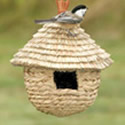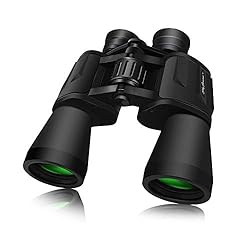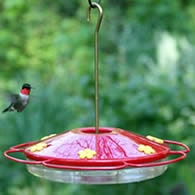The Black-Capped Chickadee: A Small Bird, Big Personality
Attracting Black-capped Chickadees in winter may be as simple as setting up a bird feeder filled with Black-oil Sunflower seed.
These active little birds need to feed every day and are common visitors to bird feeders.
With some patience and a good winter coat, it's possible to train these birds to eat from your hand.
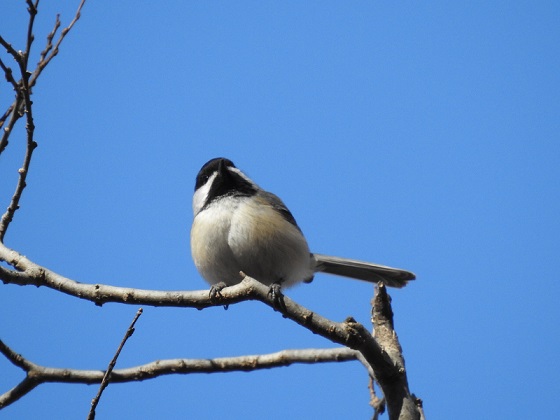
Black-capped Chickadee
Black-capped Chickadee Call - Song Meaning
Black-capped Chickadees have a wide repertoire of different calls and songs, which they use for communication and establishing territory
Fee-bee-ee Call: This vocalization is similar to the "phoebe" call but with an extended, descending third note. Males often use it during courtship or to establish territory.
Chick-a-dee-dee-dee: This is the most well-known call of the black-capped chickadee and gives the bird its name.
The song consists of a series of clear, whistled notes, often described as "fee-bee" or "chick-a-dee-dee-dee."
The number of "dee" notes can vary, but they are usually repeated in a series of two to four.
Other calls include high-pitched whistles for communication over short distances and a rapid "chickadee-dee-dee" as their alarm call.
What Do Black-capped Chickadees Look Like
Black-capped Chickadees are small birds and members of the Titmouse family and measure about 5 inches in length.
They have a plump, round body with a relatively short tail.
The bird's most prominent feature is its black cap that covers its head, extending from the eyes to the back of the head.
The cap is framed by white cheeks, giving the bird a distinctive black-and-white head pattern. It has a short, stout bill that is dark in color and a black bib.
The upper parts of the bird are grayish or, with a slight olive tint on the wings and back.
The underparts are generally white, and the sides of the body may have a pale buffy hue.
Can You Tell Female Chickadees from Male Black-capped Chickadees?
Short answere is no, not by looks. However, watching behaviors and listening to their song you can tell which is male and which is female.
At the feeder the female is likely to give preference to the male. She will take her seed after the male gets his and flies away.
The male is the only one to give the Fee-bee call. When you hear it you know it is a male.
Are They friendly?
They can be friendly and are rarely bothered by a human's presence as long as you stay away from their nest.
Many bird watchers have been able to hand-feed these little birds, especially during the winter.
Mating and Courtship Breeding Habits
By late winter, in February or early March, pairs break from their small winter flocks that have been feeding together through the cold months and begin selecting mates.
These birds are known for their distinctive calls and songs, which they use to communicate with each other.
During the breeding season, which begins in mid-April to early May, males will sing to attract females. The songs are thought to convey information about the singer's fitness and genetic quality.
They also use physical displays to attract mates. For example, males may puff out their feathers and hop around to show off their physical attributes.
Males may also offer food to females (mate feeding) as a way to attract them.
This behavior is known as "courtship feeding" and is thought to be a way for males to show their ability to provide for potential offspring.
Do They Mate for Life?
Most pairs do indeed mate for life. However, extra-pair copulation also happens. Females will sometimes copulate with a male who has a higher social ranking.
Chickadee Nesting Habits
The nesting habits of these birds begin once a pair bond is made. The female Chickadee will begin by selecting a nest site.
Locating moss and soft materials, she fills the bottom of the cavity. Nest building takes about 4-5 days to complete.
The location of the nest may be in an old woodpecker hole or excavated in trees with soft or decaying interiors. Birdhouses are also used.
Nests are anywhere from 5 to 20 feet above the ground.
One interesting aspect of their nesting behavior is that they build their nest to fit the size of the cavity they are using.
The image below shows two different sizes of Black-capped Chickadee nests, both using the same materials.
One birdhouse was larger than the other, so more nesting material was added. Interesting to note, both nests raised 6 chicks.
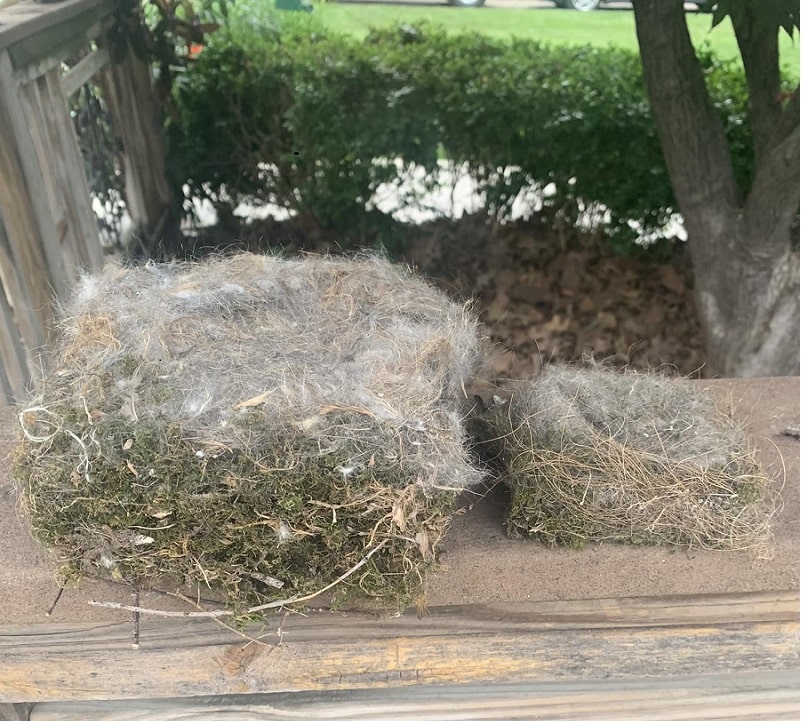
Two Different-Sized Chickadee Nest
Egg laying can begin as early as late April all the way into July. Weather, along with the health and age of the female plays a part in determining the egg laying season.
Later clutches may be a result of nest failure earlier in the season.
The female will lay up to six eggs that are white with speckles and she alone will incubate them and the eggs will hatch in 12 to 13 days.
During the incubation period, the male will bring food to her. He will also chase any other males out of the territory.
The Male Chickadee will also call her from the nest, at which time she leaves the nest, and he feeds her.
Sometimes the female will leave the nest and call the male, and he will bring food for her to eat.
Occasionally, the female will feed on her own.
After the young hatch, the female will brood the young for the first few days. During this time, the male continues to bring food.
| Black-capped-Chickadee Nesting Stats | |
|---|---|
| Eggs | 3 - 7 |
| Incubation | 12 - 13 days |
| Nestling Phase | 16 days |
| Broods | 1 |
After brooding, both the male and female share in feeding the young birds. The baby chickadees will stay in the nest for 16 days.
About 10 days after the young leave the nest, they'll be able to feed themselves. Yet, they will stay with the adults for a total of 3 to 4 weeks.
The birds raise one, rarely two, broods each season.
How Close Do They Nest to Each Other?
If placing birdhouses for Black-capped Chickadees you'll need to keep the houses a minimum of 80 feet apart.
I've had two different pairs nesting within 100 feet of each other without any problems. Of course, the experts suggest over 300 feet for best results.
Several factors come into play as to how close they'll nest to another pair. The scarcer the food, the further apart housing needs to be.
Placing feeders may help, but do not place them close to nest sites. The food you provide may attract predators that will eat the eggs and chicks.
What do Chickadees Eat?
The Black-capped Chickadees diet consists of insects, seeds, and berries. Eating large amounts of insect eggs and larvae during the nesting season.

Chickadee at Bird Feeder
Often you'll see them hanging on the underside of branches looking for insects.
Animal material makes up about 50% of their winter feeding habit, including insects, insect larvae, and egg cases. In the summer, up to 80% of their diet is animal-based.
Because they love to eat small caterpillars, chickadees do a great service by feeding on such pests as spruce budworms and cankerworms.
They also cache food, storing both seeds and insects, singly, in crevices, or under structures on the ground such as twigs.
They can find them up to a month later, and when several caches are available, they spend more time seeking those that contain greater energy value.
You can attract these birds to your bird feeder by using two of their favorite types of food.
Chickadees love both high-fat suet and Black-oil sunflower seeds.
Feeding Behavior
By watching these birds, you'll notice that only one bird feeds at a time. Each waits their turn at the feeder.
Since they stay during the winter, a Heated Birdbath would be helpful for their survival. All your winter birds need open water.
If using sunflower seed, consider adding a Squirrel Proof Feeder to your bird feeding station.
Watch as the Chickadee bird takes one seed, then flies to a nearby perch and eats the seed before returning for the next.
The reason for this behavior is that Black-capped Chickadees have small bills and need to peck the seed to open it and get the meat.
The most dominant birds feed first, while subdominant birds wait before feeding.
Dimensions For Building a Chickadee Birdhouse
These birds are cavity nesters and their nest in the wild will be found in wooded areas.
The nest is excavated in the soft, partially rotted wood of a tree trunk or broken limb. These birds are excellent candidates for man-made nest boxes.
The ideal size hole opening for the Black-capped Chickadee birdhouse is 1 1/8 inches in diameter.
The nest box should be about 8 inches in height with a floor size of 4 inches square. Drill 4 drainage holes in the floor.
The bottom of the entrance hole should be 4 to 6 inches above the floor of the birdhouse.
Face the house as close to the Northeast as you can to keep wind and rain out.
A really simple house for these birds can be made from a 4-inch PVC pipe.
Chickadees Checking out Birdhouse
Use a 4-inch inside diameter PVC pipe 8 inches long and drill the opening 2 inches below the top. Purchase two PVC caps.
Purchase two PVC caps, and attach one on the top of the house and one on the bottom with screws. Screws allow for easy cleaning.
Rough up the front below the hole to help the bird's grip but never use perches. Perches only help predators and the Chickadees don't need them.
Place the PVC house where it gets plenty of afternoon shade to keep it from getting too hot.
Locate any Chickadees Birdhouse 4-15 feet high. Place a few wood chips in the nesting box to encourage nesting.
They will not use the wood chips, but this may help in attracting them to the nest box.
They will have several nest site locations excavated before selecting the one they use.
To be honest, I've had them nest in bluebird houses although one house I reduced the hole size to 1 1/8 to keep House Sparrows out. I had pairs in both houses. 1 1/2 and 1 1/8 inch hole size.
I just feel better with the smaller opening. As an aside, I watched a Downy Woodpecker inspect the house with the larger opening in late fall.
Should predators become a problem, the nesting pair will abandon the nest and build a new one some distance away.
Chickadees - Late Summer And Winter Behavior Habits
After the end of the nesting season when the young have left the nest, look for these birds to gather into small flocks of a dozen or fewer.
Chickadees tend to remain on or near their breeding ground throughout the winter.
Each flock contains some juveniles, some adult pairs, and some single adults.
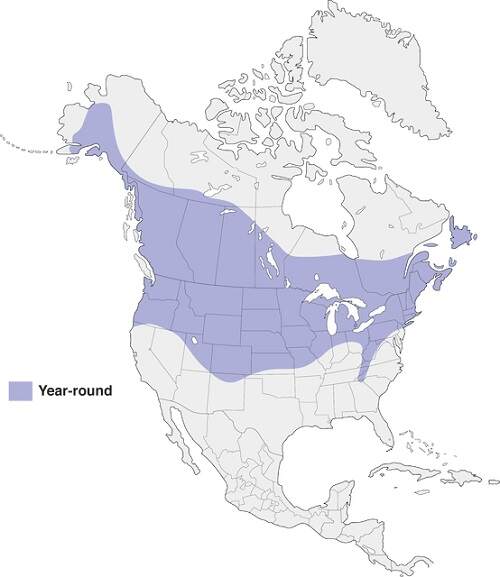
The flocks form around a dominant pair and establish a feeding territory in which it defends against other flocks.
In more northern regions during cold weather, Chickadees (as well as other birds) often puff out their plumage, looking like a fat ball of feathers.
This is a heat-conserving mechanism as more air is trapped around the down feathers, which increases insulation and prevents the loss of body heat.
They can also constrict blood vessels in the skin, which further reduces heat loss.
If these mechanisms are not sufficient to maintain their body temperature (about 110 degrees F.), they can generate additional heat by shivering.
Unfortunately, this is only a temporary measure, as it requires the metabolism of food reserves.
During cold winter nights when temperatures drop and food reserves are low, Chickadees have a final trick up their sleeve. They enter a state of torpor.
This depresses bodily functions, including breathing and metabolism, and drops body temperature by about ten degrees. This significantly decreases the need for food reserves.
These small flocks are joined by other species of birds as they move through their feeding territory.
Some of these other species you'll see them with are Downy Woodpeckers, Tufted Titmice, and White-Breasted Nuthatches.
The flock stays together from August through February. After which, the Black-capped Chickadees begin a new season.
What is the Lifespan of the Black-capped Chickadee
The average lifespan of Black-capped Chickadees in the wild is only 2 to 3 years. Only about 20 percent of the young that are born in any year will make it past their first year.
Just when you think nothing new happens in the birding world, you find a new record is recorded.
In Minnesota, the year 2011, Ornithologist Michael North re-captured a bird he had banded 9 years ago.
The bird was a two-year-old at the time of banding, which makes the bird 11 years and 6 months of age.
The old lifespan record was 11 years and 2 months. I know, not a lot of difference. Still, it's a record.
Your bird feeder can make a big difference in severe winters.
Birds that survive their first full year will have the skills needed for future survival.
Difference Between Male and Female Black-capped Chickadee
The male and female exhibit subtle but distinct differences in their physical appearance.
I've found that it is easier to compare the two while nesting in a birdhouse. This gives me time to sit patiently and watch.
While both genders share the iconic black cap and bib, there are a few key characteristics that set them apart.
In terms of size, male Black-capped Chickadees tend to be slightly larger than females.
Males typically have a longer body length and a slightly heavier build compared to their female counterparts.
One of the most noticeable differences lies in the coloration of their plumage.
Male Black-capped Chickadees often display more vibrant and intense colors.
Their black cap extends further down the back of their neck, creating a striking contrast against their white cheeks.
Additionally, their wings and tail feathers may exhibit a deeper shade of gray.
On the other hand, female Chickadees have a slightly less sharp appearance.
Their black cap is usually smaller and less pronounced, and their overall plumage tends to be lighter.
This subtle variation in coloration may serve as camouflage, allowing the females to blend in more effectively with their surroundings during nesting and incubation periods.
While these physical differences may help in distinguishing between male and female Black-capped Chickadees, it's important to note that these variations can be subtle and may require a keen eye to discern.
Perfect Gift Idea - Heated Bird Baths
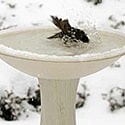 Heated Pedestal Baths |
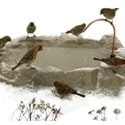 Heated Ground Bath |
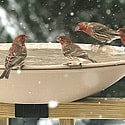 Heated Deck Mounted |
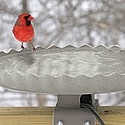 Scallaped Deck Mounted |


